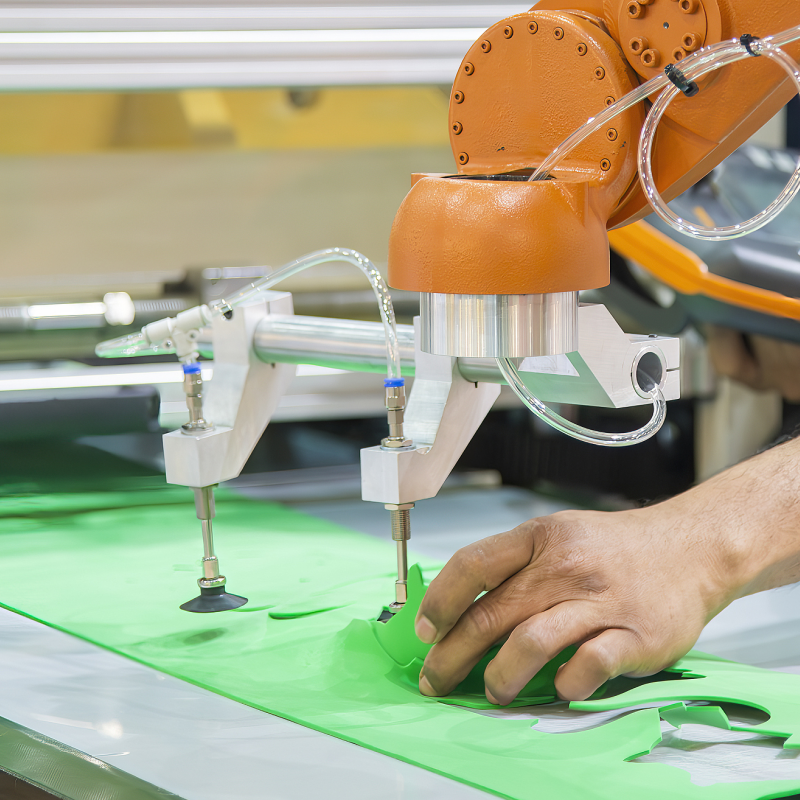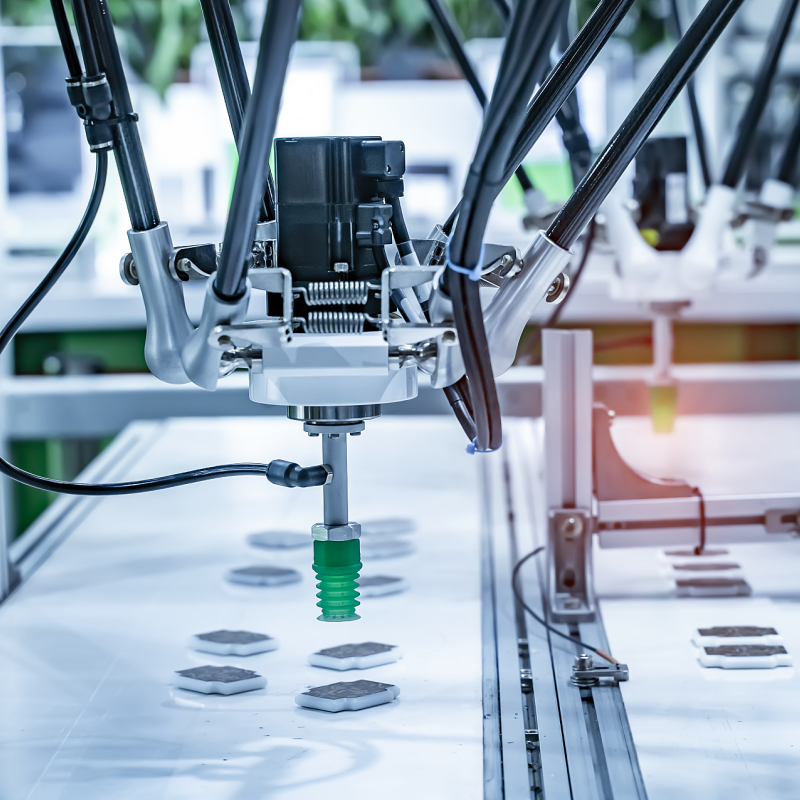Vad är principerna och huvudsakliga användningsområdena för vakuumförsuggare?
Vad är principerna och huvudsakliga användningsområdena för vakuumförsuggare?
Vakuumssugkoppar används vanligen som en kraftpunkt för manuella eller automatiserade transporteringsapplikationer. De kan skydda och hjälpa till att flytta en bred rangering av utrustning - från flaskor och säckar till tegel och bräder, samt metallplåtar, rör och fönster. I grunden är de gränssnittet mellan vakuumssystemet och arbetsstycket.
 Typiska vakuumhanteringssystem är ryggraden i många industrier, inklusive förpackning, livsmedel, drycker, träbearbetning, metallskärning, fordon, halvledare och elektronik. Pneumatiska vakuumssugkoppar har många fördelar i sådana applikationer, inklusive att de är relativt enkla, kompakta, lättviktiga, billiga och kräver lite underhåll. De kan hålla delar fast i snabbflytande applikationer och kan mjukt hantera känsliga delar.
Typiska vakuumhanteringssystem är ryggraden i många industrier, inklusive förpackning, livsmedel, drycker, träbearbetning, metallskärning, fordon, halvledare och elektronik. Pneumatiska vakuumssugkoppar har många fördelar i sådana applikationer, inklusive att de är relativt enkla, kompakta, lättviktiga, billiga och kräver lite underhåll. De kan hålla delar fast i snabbflytande applikationer och kan mjukt hantera känsliga delar.

Tekniskt sett suger sugplatt inte automatiskt in och håller ytan av produkten. I stället, när sugplatten nuddar ytan på arbetsytan aktiverar den en vakuumgenerator (som till exempel en vakuumatomiseringsmunstycke, ventilator eller pump) och drar luft från sugplattens inre struktur och skapar ett vakuum. Antagande att standardlufttrycket inom strukturen är lägre än det standardlufttryck som finns utanför sugplattan, trycker atmosfärstrycket arbetsytan mot sugplattan. Ju större skillnaden mellan miljötrycket och vakuumtrycket inuti vakuum-sugplattan, eller ju större effektiv area av sugplattan som verkar på arbetsytan, desto större hållkraft som trycker sugplattan mot arbetsytan.

Jag idealt sett bör sugkupen passa en slät, icke-porös yta. När ett vakuum skapas, slutas kanterna av sugkupen och luften inom strukturen utsläpps snabbt, vilket gör att arbetsernstycket hålls fast. Men den icke-ideala situationen är många gånger den vanliga eftersom materialet ofta är olefin-dekomponerat, grovt eller ojämnt. I så fall kan sugkupen inte slutas, och den yttre luften fortsätter att tränga in i systemet, vilket kallas för ett läckande system. Designern måste kompensera för det läckande systemet genom att använda en högflödesvakuumgenerator eller en mindre sugkupa för att minska risken för läckage.
Vakuumkupor
Sugkopar finns i variationer från enkla ringkopar till kopar som är utformade för specifika tillämpningar som hantering av sockerkuber, fettiga metallplåtar eller porösa material som trä och papp. De finns i två allmänna former, platta och rynkade.
Platta sugkoppar är lämpliga för hantering av arbetsstycken med platta eller svagt deformera ytor, såsom metall och glas, plast och trä. Platta sugkoppar har en liten intern volym, så de kan evakueras snabbt och kan också flyttas snabbt på kort tid. Med rätt design har de god tillförlitlighet för att hantera höga skjuvstyrkor och kan också motstå krafterna och hastigheterna från snabba automatiserade transporteringsrörelser.
Klockormsugkoppar har däremot en eller flera oscilleringar. Detta låter dem kompensera för olika arbetsstycks höjder och hantera delar med ojämna ytor. Klockormarna orsakar också en lyftande rörelse när de trycks ihop, vilket hjälper till att mjukt greppa känsliga delar som elektronikkomponenter eller till och med choklad.
Klockormsversioner används vanligtvis för att hantera böjda komponenter som karossdelar, rör och rör, injektionsmoldade plastdelar och icke styva förpackade eller shrinkwrapped varor.

